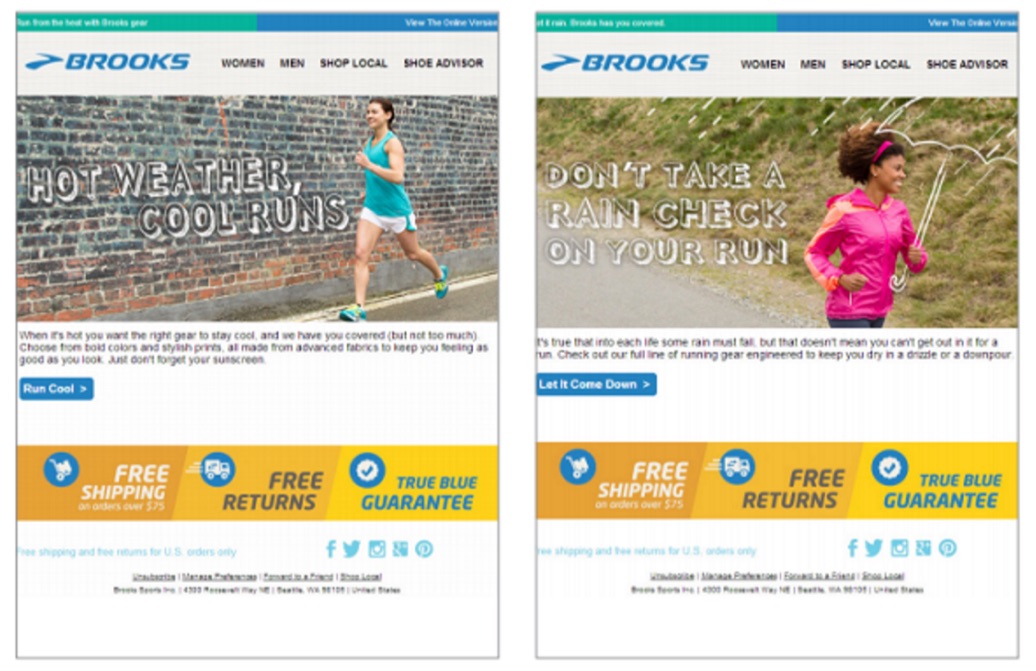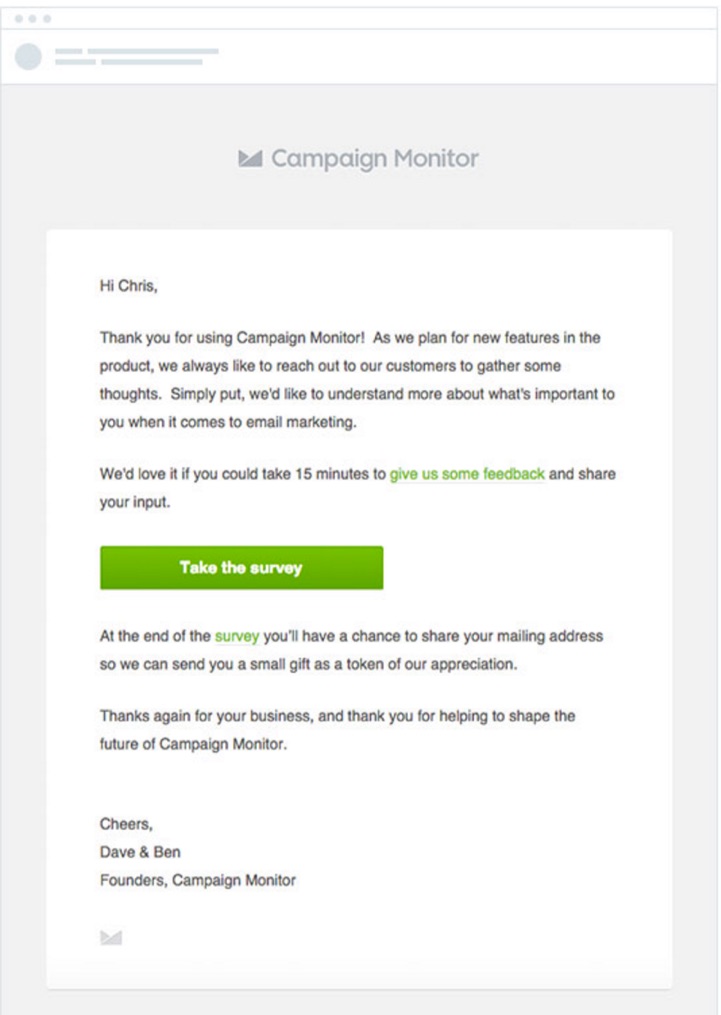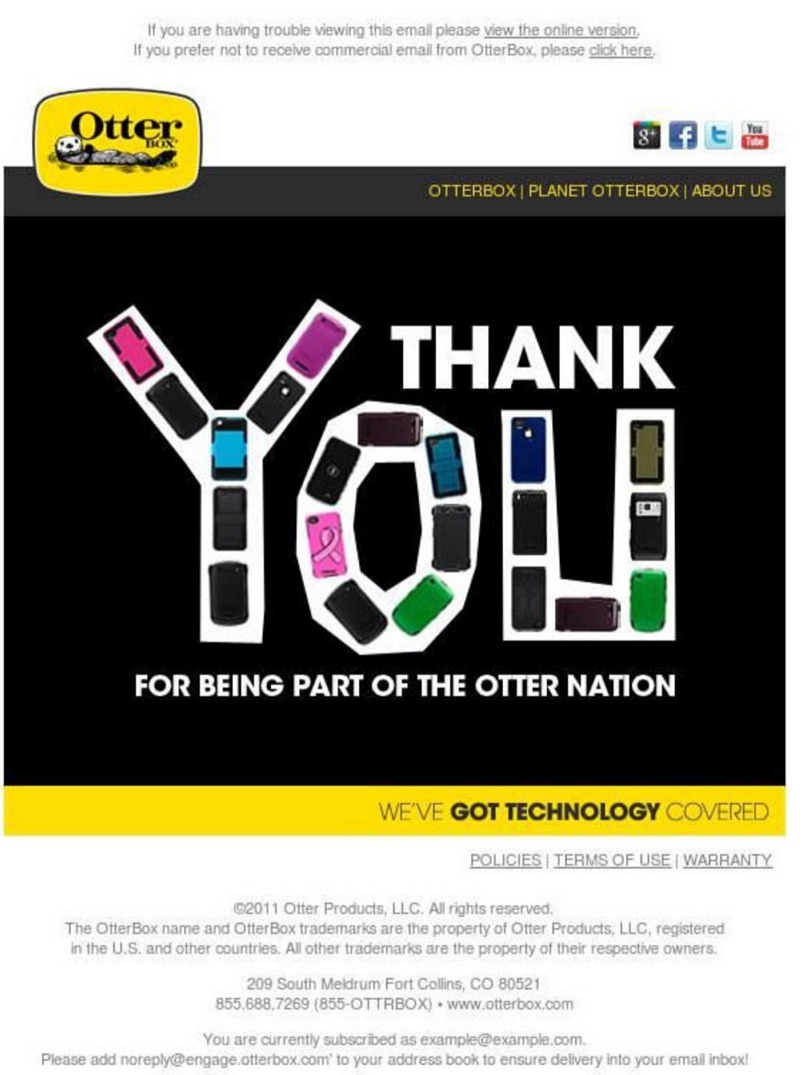Churn is your arch nemesis.
And it’s cutting into your profits.
Research shows that “80% of your company’s future revenue will come from just 20% of your existing customers.” So, your team must focus on satisfying customers and ensuring they gain value.
To keep ecommerce consumers in the sales cycle, create email campaigns that engage and educate your audience. The goal is to engulf customers in a worthwhile shopping experience.
Retention emails are “designed to get customers more engaged, whether they are totally inactive or just not taking full advantage of your product.”
Initiate email campaigns to retain customer’s interest in your brand and products. Try these four strategies:
1. Segment Your List
You’ve heard it before: segment your list. But what does that mean? And how will it benefit your customers?
Email segmentation is targeting specific groups based on a certain criteria. The notion is that everyone isn’t the same.
Consumers live in different locations and possess different interests. More importantly, your business customers have different budgets.
Therefore, it wouldn’t be logical to send the same mass email to all your subscribers. It would be useless to the customer.
“Nobody likes generic emails; they’re lazy, unhelpful, and a waste of inbox space. So by segmenting your email sends, you’re saving your customer time and helping them discover products they’ll love,” writes Joe Stych, marketer at Zapier.
Segmentation gives rise to personalization. It lets you inform customers about products that fit their particular circumstances.
By segmenting your email list, your team can provide relevant content to multiple target audiences.
Athletic shoe company Brooks used data to create multiple campaigns based on the weather conditions. The emails below show how their team crafted the copy and inserted photos to fit the consumer.

The million-dollar question is: How do you segment the email list?
Analyze internal data to learn about the buyer’s habits. For instance, segment the list based on product usage, customer support tickets, or webinar training attendance.
“Identify at-risk customers. Even before a user cancels a subscription, there are several signs to help you identify that they’re in danger of churning. Keep a lookout for engagement flags, such as less frequent website visits than before. For example, customers may go from using the service daily to weekly and then monthly,” says Shane Barker, a digital marketing consultant.
Be proactive. Send targeted emails to stop churn.
2. Offer Educational Content
Combat churn by actually teaching customers the value and functionality of your products. They will gain a deeper understanding of your brand.
Mark Quinn, a Segment VP of Marketing with Leggett & Platt, agrees:
“When you’re educating people, you’re helping them understand the benefit of a solution. Consumers can find information anywhere these days, but when it comes from you, the benefit is twofold: you establish a more knowledgeable customer base while you develop loyalty.”
Stop sending predictable emails; switch things up with gifs, video, and case studies. Educational content includes everything from a detailed guide to a Snapchat story.
And the best content answers questions from customers or concerns they may have.
How can I use your product more efficiently? What features can accomplish X task?
Use email as a launching pad to engage the customer. You don’t have to include every little detail in the email. Your goal is to encourage them to take action.
For instance, write short snippets of the article in the email. Then, hook customers to continue reading. Add a “Read more” call-to-action button that takes the subscriber to your blog for the full article.
That’s how LinkedIn does it. Their team engages with customers via email to boost blog traffic. See the email below.

If you want email subscribers to act now, create a sense of urgency. Use time limits or add bonus incentives.
“Apply the threat of scarcity to your educational content marketing. This works particularly well when you set up the classic challenge and solution scenario in your content, pinning something like time or money as the motivator to change a behavior,” writes Julie R. Neidlinger, content crafter at CoSchedule.
Keep churn at bay with educational content.
3. Send a Feedback Email
Churn happens for several reasons. And most of the time, it’s preventable.
A good starting point is to collect feedback from your users.
“Target customers who have bought from your business before and ask them for a review or recommendation. Not only is this best practice but, for an eCommerce store, it is a genuine means of bringing customers back to your website to purchase again,” writes Chris Hexton, one of the founders of Vero.
Learn from your customers. The direct approach is to ask them questions like:
- On a scale of 1 to 10, how much do you enjoy our product?
- How can we improve our customer service?
- Would you recommend us to a colleague?
Compose an email leading consumers to a quick survey. And keep the design simple.
Stay away from unnecessary images or headings in the email. Focus on the message and the call-to-action. The key is to reduce distractions and encourage consumers to take your desired action.
Below is a feedback email by Campaign Monitor.

Analyzing your email campaign results is an indirect method to gather feedback. Find out if your customers are active.
Monitor your email open rates. Discover which links they click. And evaluate the replies you receive.
“Click-to-open rate can help evaluate the quality of your content and the engagement of your subscribers. It can point to possible ways to improve campaign performance and help compare your subscriber’s expectations to what you are actually delivering,” writes Ben Niolet, former marketing director at Contactology.
Take advantage of customer feedback. Cater to their needs to increase retention.
4. Show Appreciation
Everybody needs a little love. It’s time to show your customers some appreciation.
Use email as a communication tool to express your gratitude. Remind customers how much you value their business.
“These users have become habitualized to not thinking about your brand, and you need to break them out of that pattern with something special. Coupons, promo codes and special offers are the go-to incentives at this stage, and they have proven effective,” states Bob Colner, director of marketing and data science at Boomtrain.
Appreciation takes several forms. It can range from a simple thank you to a discount on a purchase to an all-access pass to an upcoming conference.

Work with your team to determine how to distribute your appreciation. A 10-year customer may get free tickets an exclusive event, while someone who bought $50 worth of products may receive a 10% coupon.
Be mindful of your appreciation gifts. Some customers may consider your discount as a promotion, rather than a thank you.
Brian Morris, a writer for PsPrint, says, “You might think offering customers an upgrade or an add-on item at a discounted price qualifies as a customer appreciation strategy, but it’s really an upsell or cross-sell. That’s not a customer-centric strategy; it’s a sales strategy.”
Decide how you will show customer appreciation. And use it as a tool to reel inactive users back to your brand.
Email to Reduce Churn
Existing customers are your best asset. With the right mix of nurturing, your team can fight high churn rates.
Segment your list to deliver customized messages. Send feedback emails to gather customer intelligence. And show appreciation with a simple thank you email.
Upgrade your email campaigns. Reduce churn.
About the Author: Shayla Price lives at the intersection of digital marketing, technology and social responsibility. Connect with her on Twitter @shaylaprice.